12 Best Things To Do In Luxor (A Local’s Guide)
8 min readLuxor is overflowing with mind-blowing Ancient Egyptian monuments- from giant sun god temples to underground tombs of legendary pharaohs.
But Luxor can also be a bit much. There’s just so much to see that visitors often complain of getting “templed out.”
I’ve been living in Egypt for over a decade and Luxor is one of my favorite stomping grounds. I love exploring all the famous temples in-depth and wandering off the tourist trail.
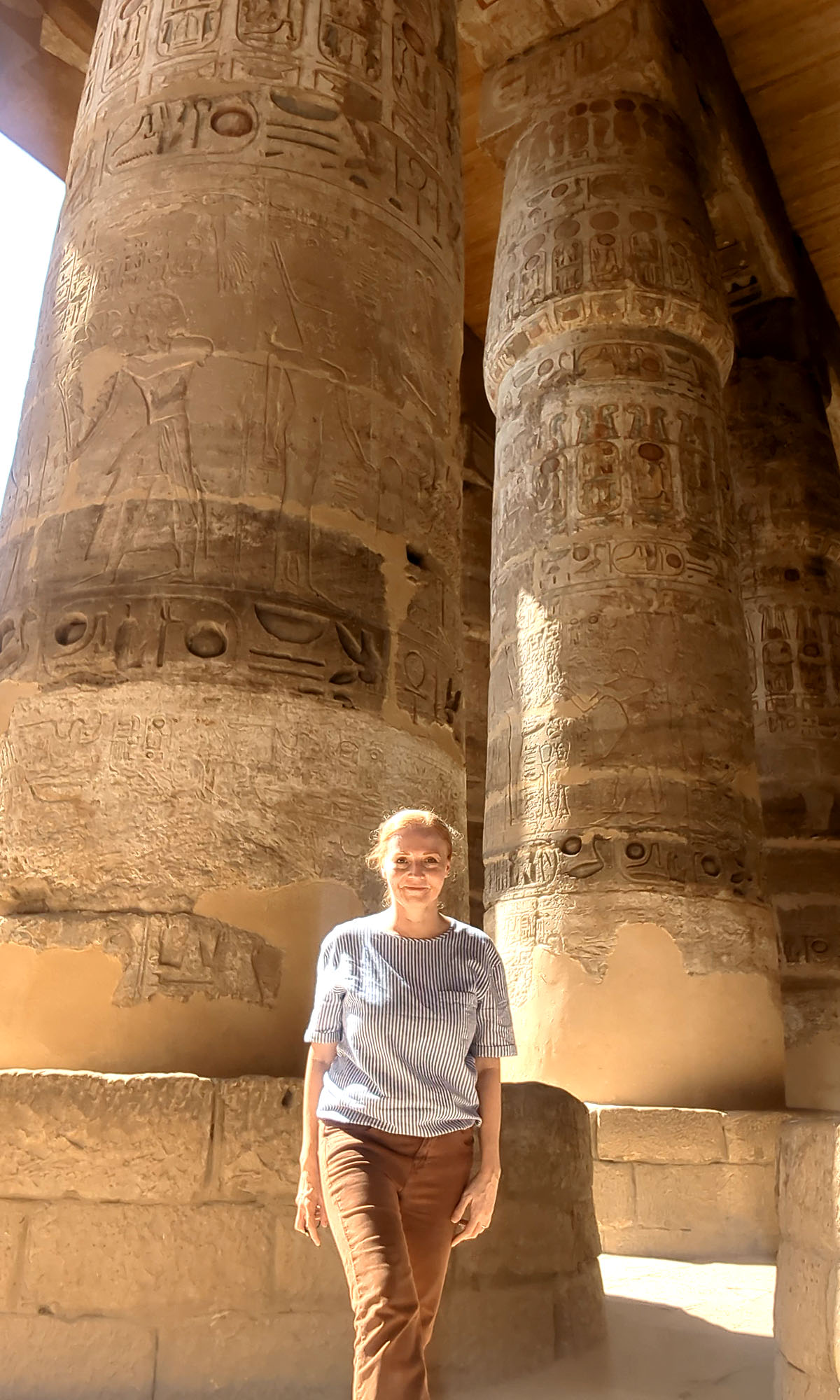
And this is my ultimate guide to the best things to do in Luxor – from iconic sites like Karnak and the Valley of the Kings to gems off the beaten path and insider tips.
Use this guide to plan your perfect itinerary – and avoid common mistakes!
Best things to do in Luxor:
1. Karnak Temple
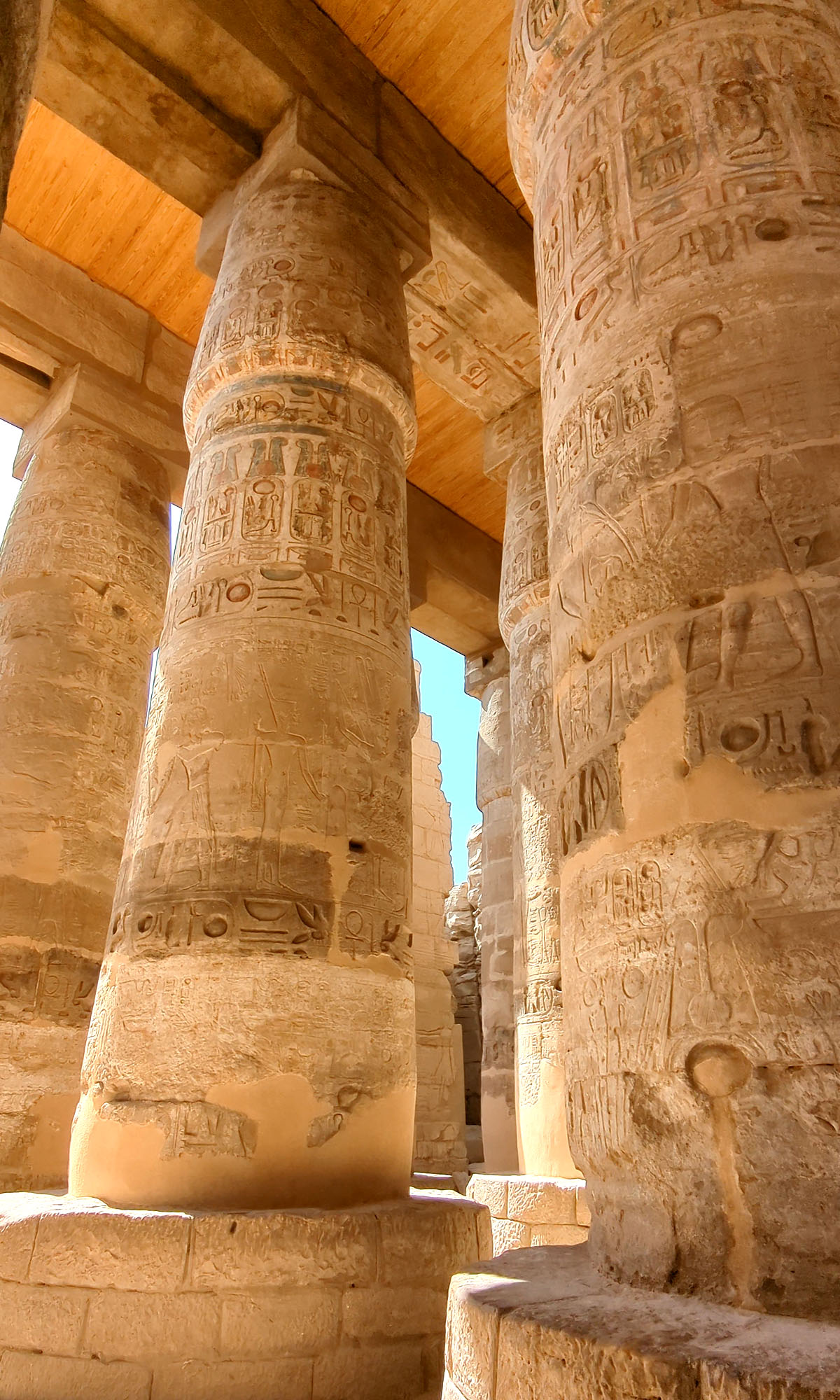
This massive temple complex is the ultimate masterpiece of Ancient Egypt built by 30 different pharaohs over 1,500 years.
Each legendary pharaoh added on their own additions over the centuries to outshine their predecessor and pay homage to Amun, the king of the gods.
Karnak is the world’s second-largest temple (after Angkor Wat) with a glorious hypostyle hall that’s like a forest of enormous columns adorned with still-vibrant hieroglyphs.
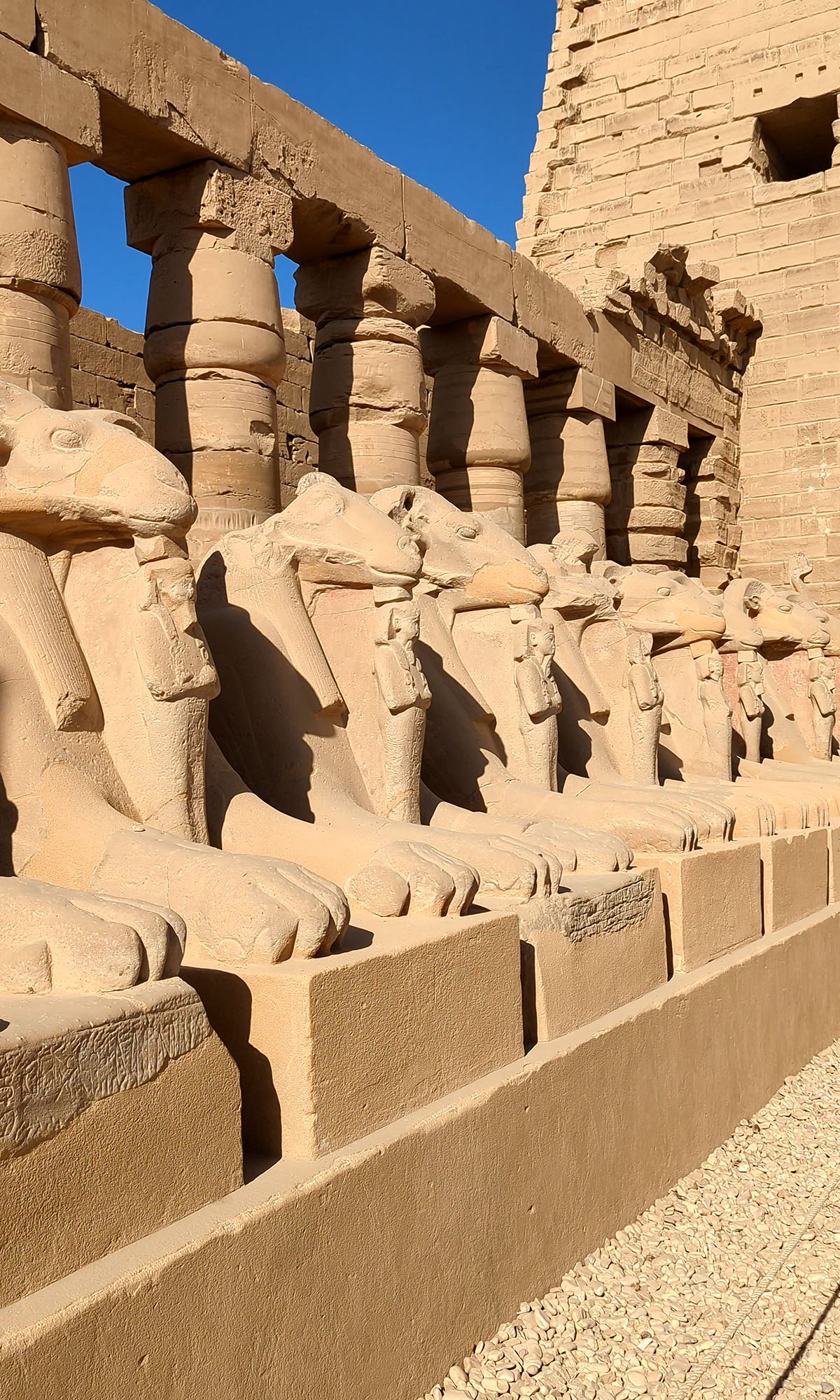
Insider’s tip: avoid temple meltdown and stop for a cold hibiscus tea at the cafes alongside the sacred lake. Explore the complex in chunks and devote at least 3 to 4 hours for your visit.
Don’t miss the famous obelisk by the female pharaoh Hatshepsut and an epic avenue of sphinx statues that leads straight to nearby Luxor Temple.
If you’re visiting during the scorcher summer months, get there early to beat the heat. Karnak opens at 6 am and the cooler air is worth the early wake-up. In the evenings there’s a Sound & Light show – it’s a bit dated but still enjoyable for the ambiance.
2. Valley of the Kings
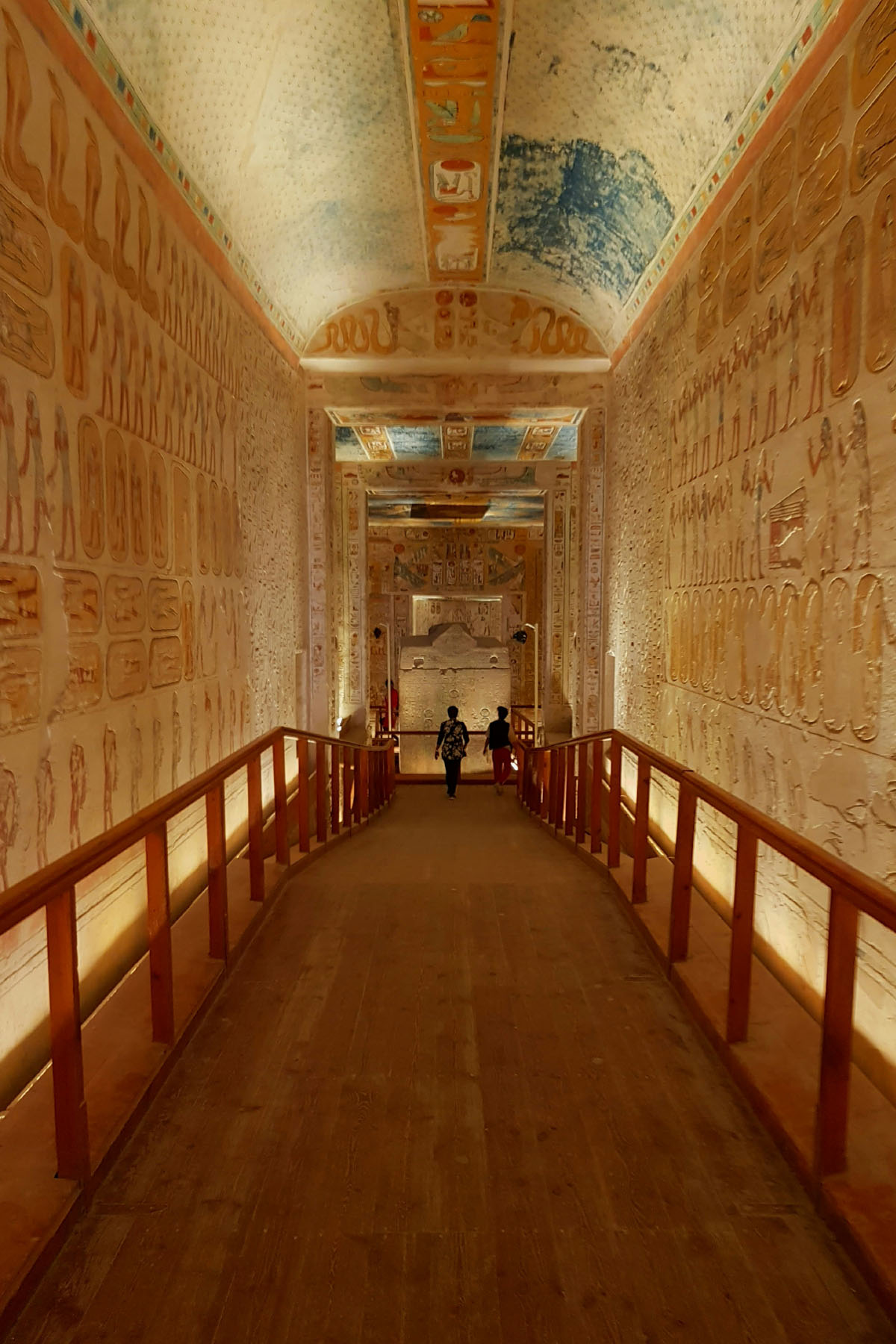
Luxor’s Valley of the Kings is a giant graveyard of pharaohs dotted with amazing underground tombs to explore – some as vibrant as if they were painted yesterday.
The most famous tomb here (but not the most impressive) is Tutankhamun, unearthed by Howard Carter in 1922. But there are about a dozen other tombs usually open to visitors (out of a total 63).
These tombs are breathtaking to explore. Imagine walking down the steps into a maze of passages and walls covered with vibrant hieroglyphs. Many paintings have hardly faded even after thousands of years.
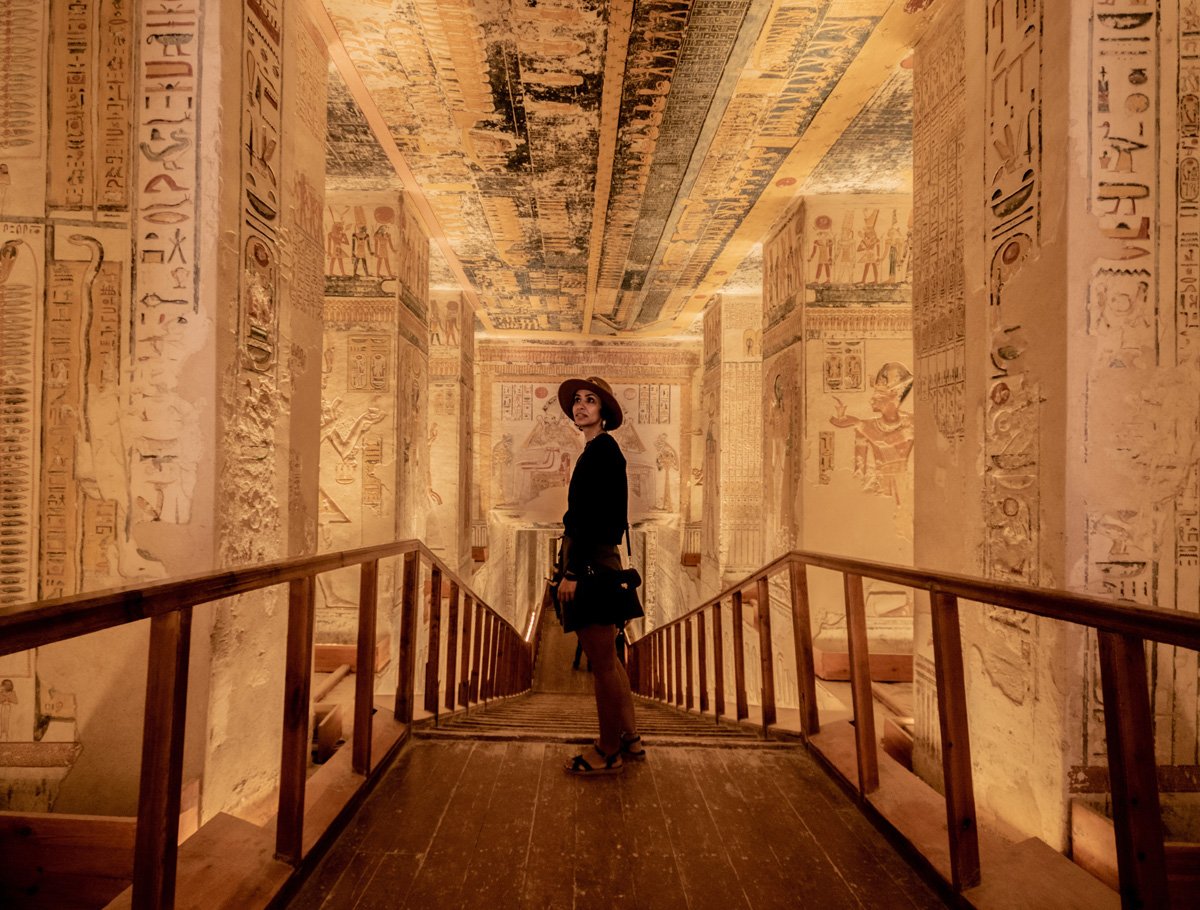
The Valley of the Kings was used as a burial site for 464 years during the New Kingdom. It was built to conceal the pharaohs for prosperity under the Theban sands. But even with their hidden entrances, nearly all the valley’s tombs were robbed in ancient times.
Insider’s tip: Your Valley of the Kings ticket gives you entrance to three tombs of your choice – the guards punch your ticket each time you enter a different tomb. I recommend visiting Ramses III and IX and Merenptah on the standard entry ticket. Note that tour guides aren’t allowed inside so they’ll usually explain the temples before you go inside.
Several other tombs require additional tickets. Seti I is by far the most stunning tomb in the valley and worth the 45 USD ticket price!
3. Luxor Temple
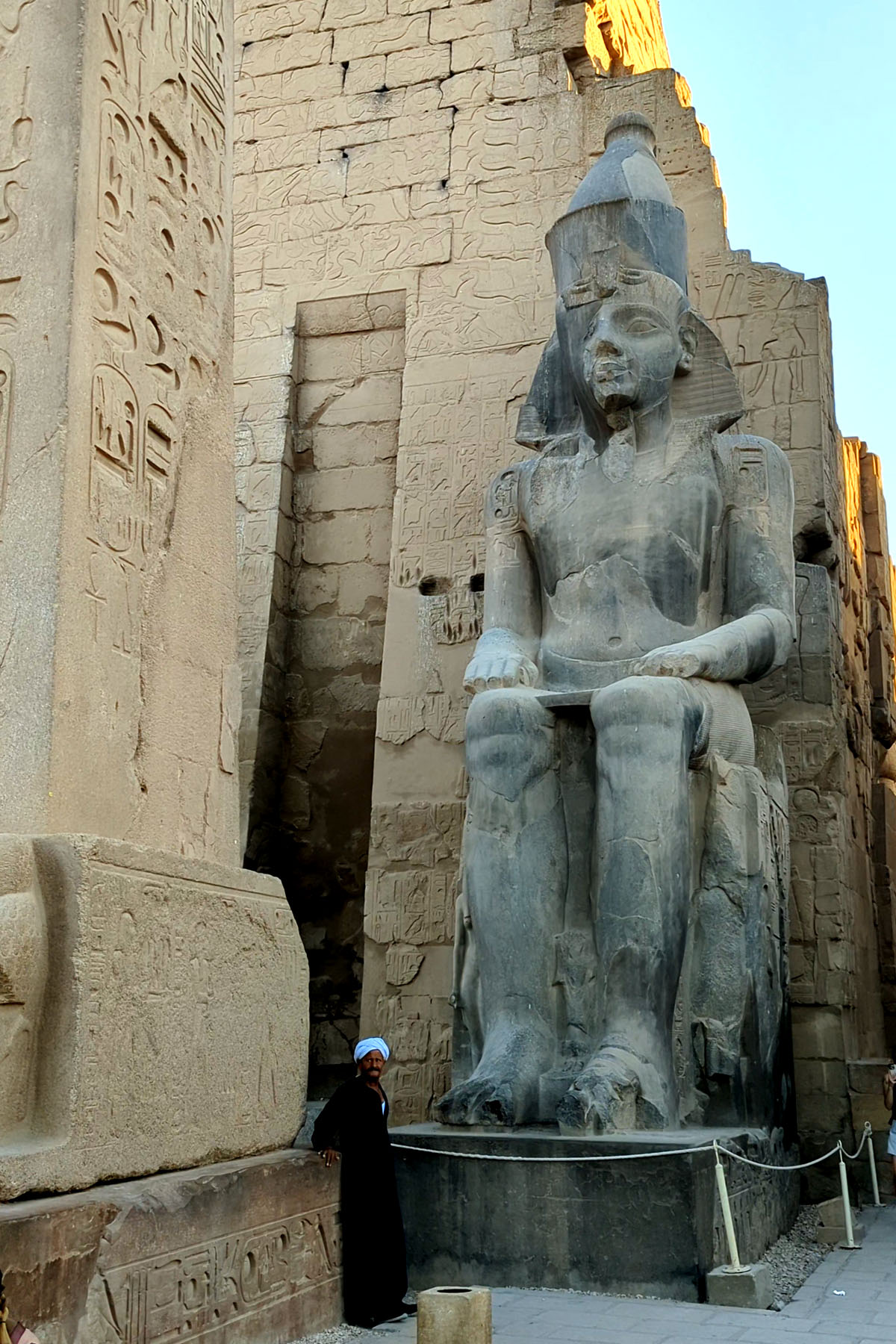
Luxor Temple breaks the mold of traditional Egyptian temples. Forget somber tributes to deities – this was the heart of ancient Egyptian royalty, a stage for pharaohs’ coronations and vibrant festivals.
Giant statues and towering gateways dominate the scene all designed to glorify the rulers themselves. Here the spotlight shines brightly on the pharaohs.
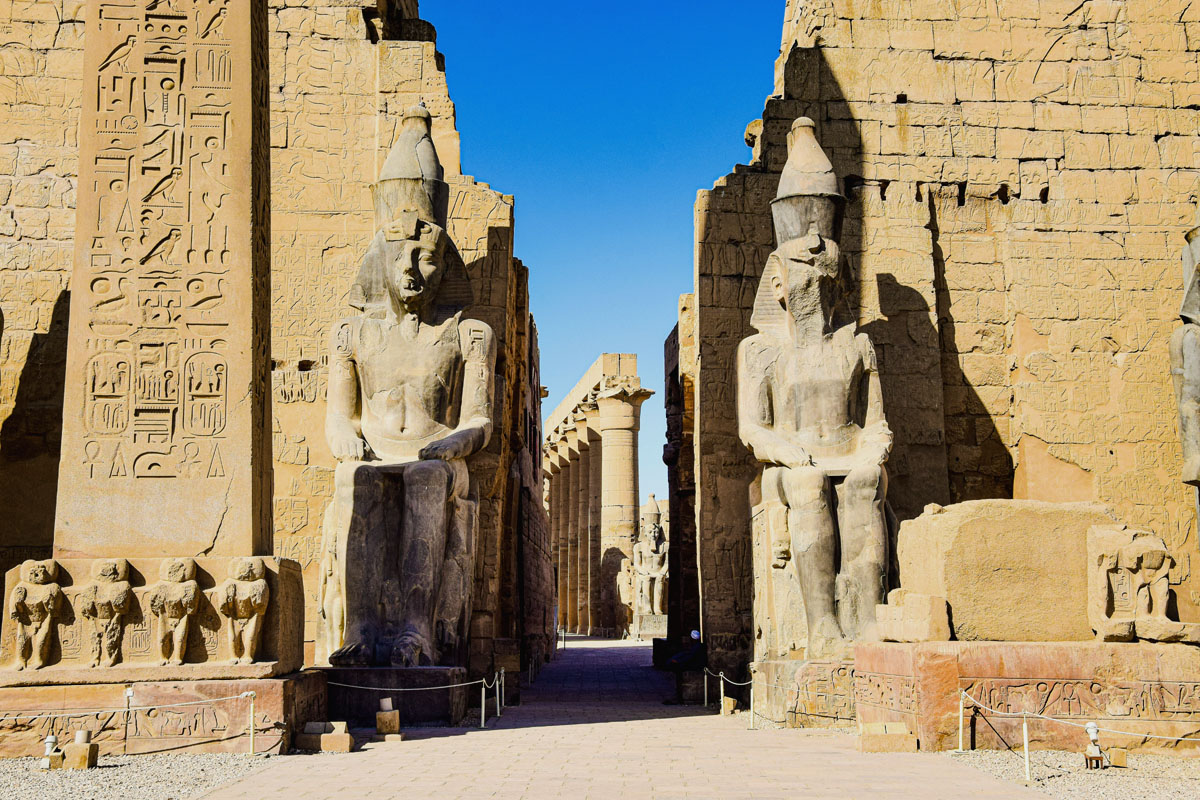
Insider’s tip: Luxor Temple stays open until 10 pm so it’s perfect for a pre-sunset visit. Watch the last rays of sun bathe the temple in a golden glow. Then marvel at the statues and columns under nighttime illumination.
Remarkably, Luxor Temple has been a place of continuous worship for over 4,000 years! Both Christians then Muslims followed in the footsteps of the pharaohs. And there’s even a medieval mosque built within the temple walls.
4. Hatshepsut Temple
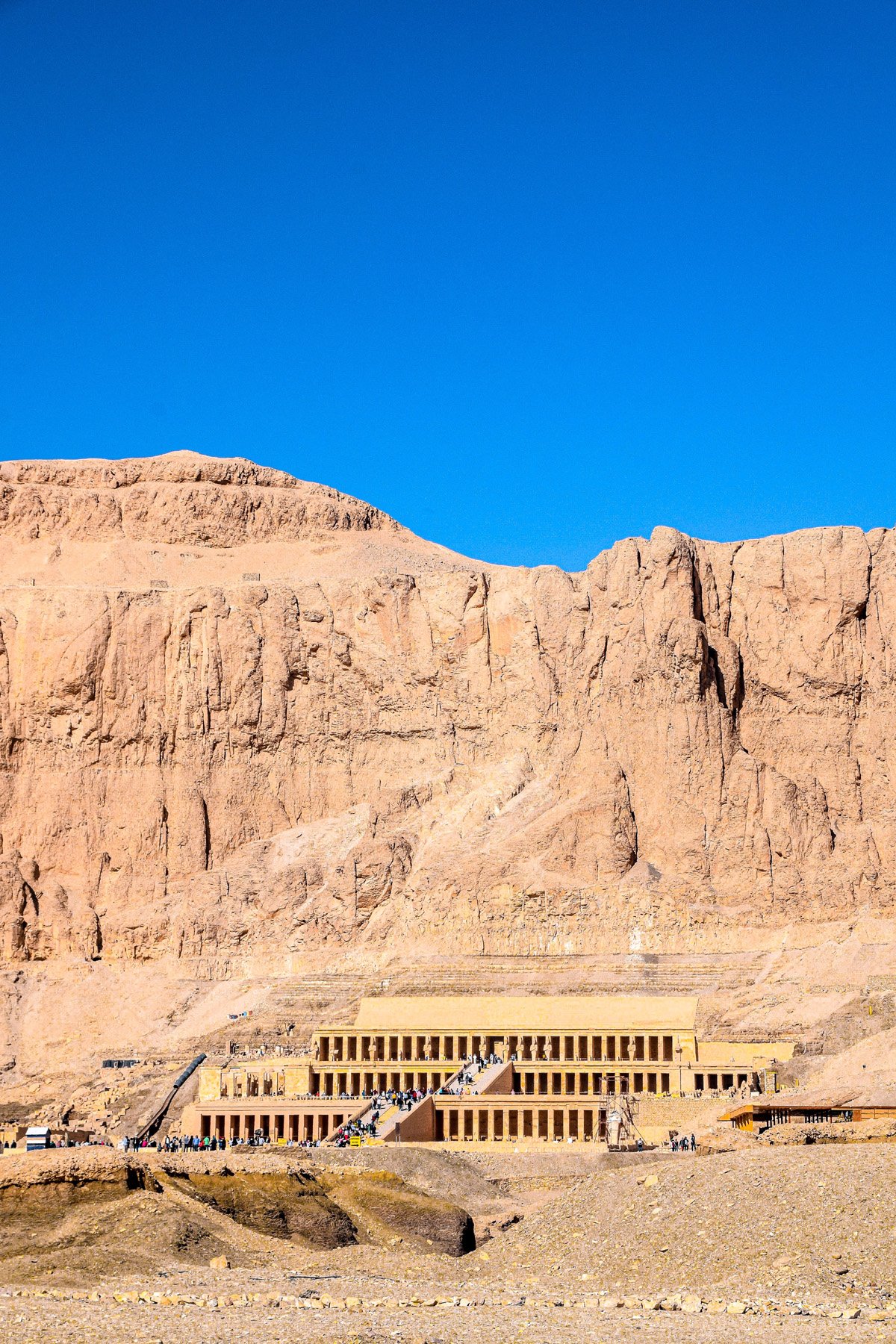
Hatshepsut – the queen who defied expectations – carved her own breathtaking temple against the cliffs of Thebes.
Located at Deir al-Bahri, the Temple of Hatshepsut is an architectural marvel and a testament to both the female pharaoh and the sun god, Amun.
Imagine colonnades adorned with exquisite carvings, statues of Hatshepsut herself radiating power, and an altar dedicated to the life-giving sun god, Ra. Reliefs throughout the temple showcase Hatshepsut’s achievements, including a daring expedition to Punt where she procured exotic treasures.
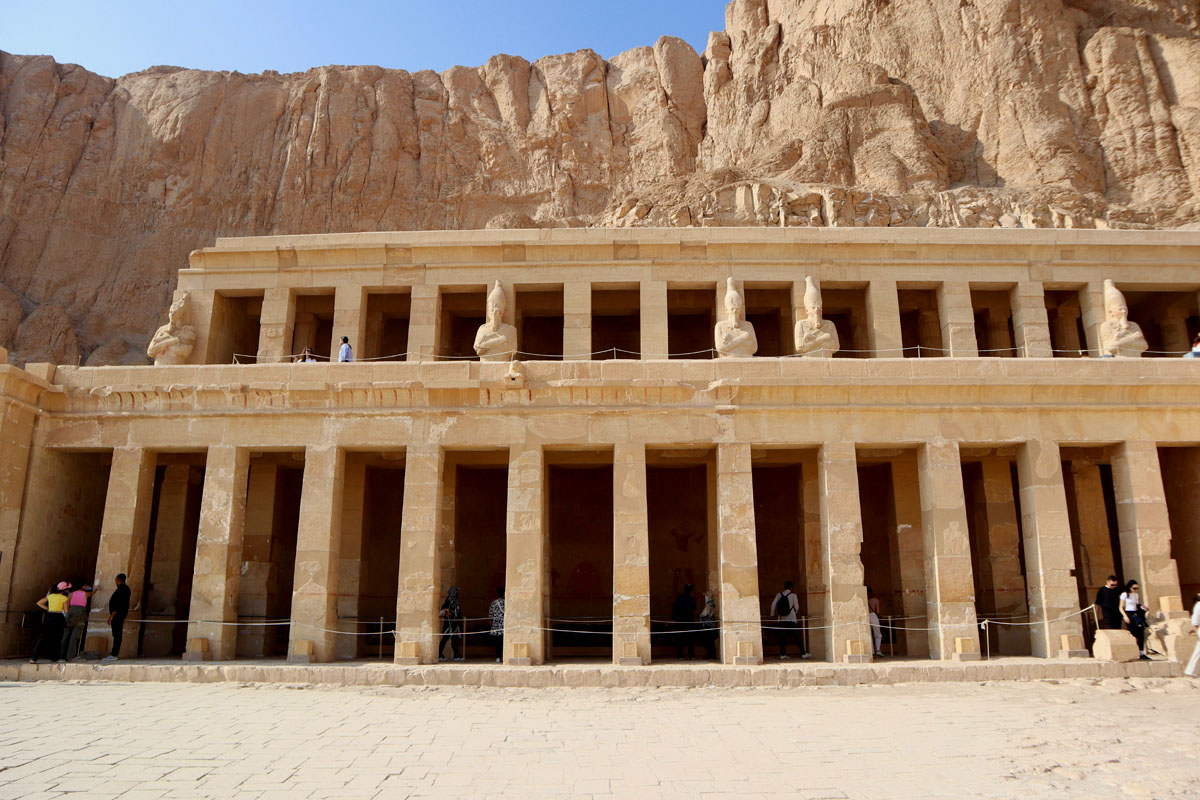
Insider’s tip: Avoid the long walk up the hill. Instead, hop on one of the golf carts that ferry visitors between the entrance and the temple itself.
Some of the temple was vandalized by her vengeful stepson in an attempt to erase Hatshepsut from history. But her temple has persevered. Its clean lines and symmetrical columns are almost modern – and a striking contrast to the rugged cliffs of the West Bank.
5. Temple of Amenhotep III
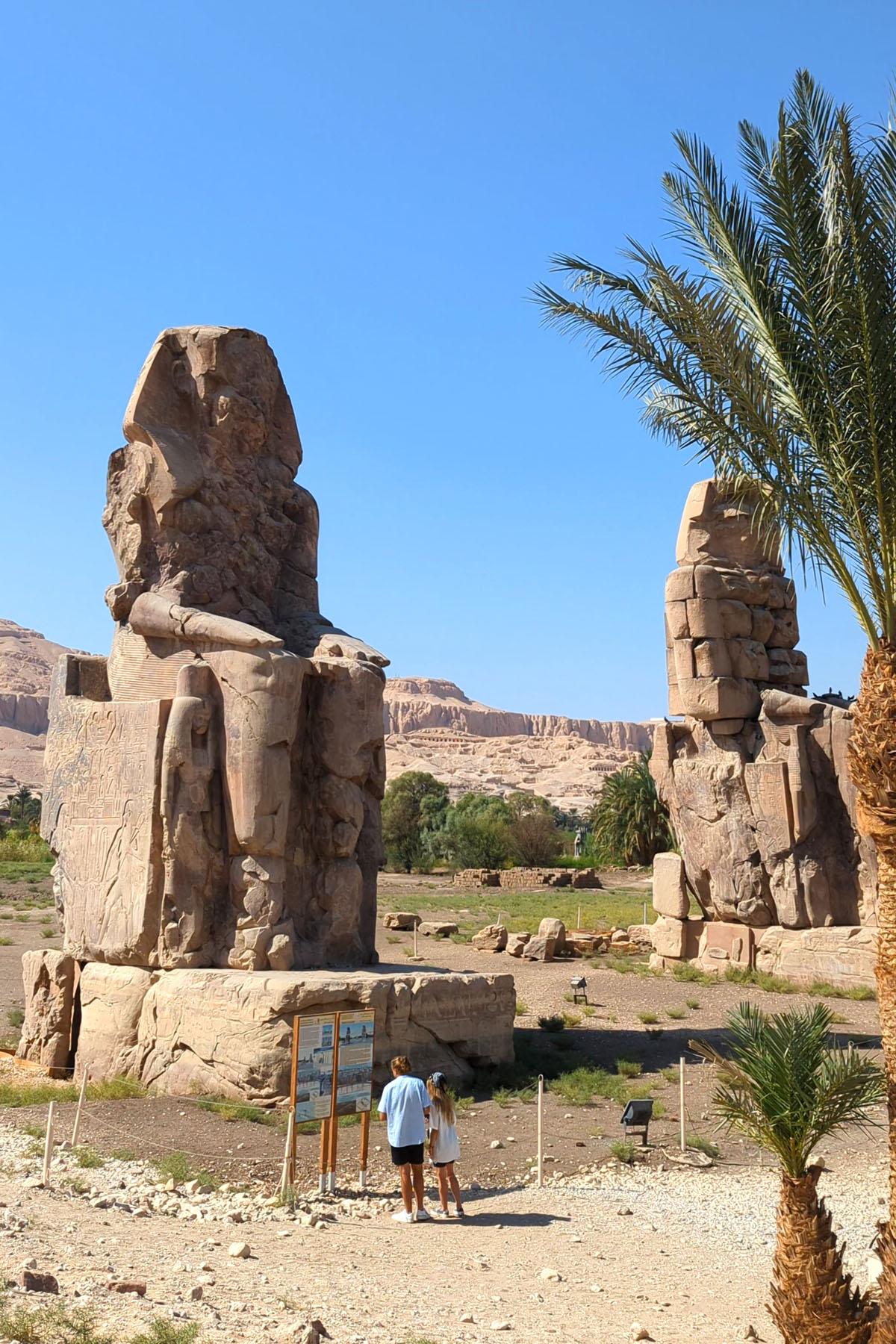
While the colossal Colossi of Memnon attract throngs of visitors, they’re merely the gateway to a grander discovery.
These two enormous figures once guarded the entrance to the Temple of Amenhotep III, once the largest funerary complex in Thebes. Nile floods and earthquakes ravaged much of the temple. But they’ve still left behind some impressive remnants.
And you’ll witness Egyptology in action because excavations are often ongoing in this part of Luxor.
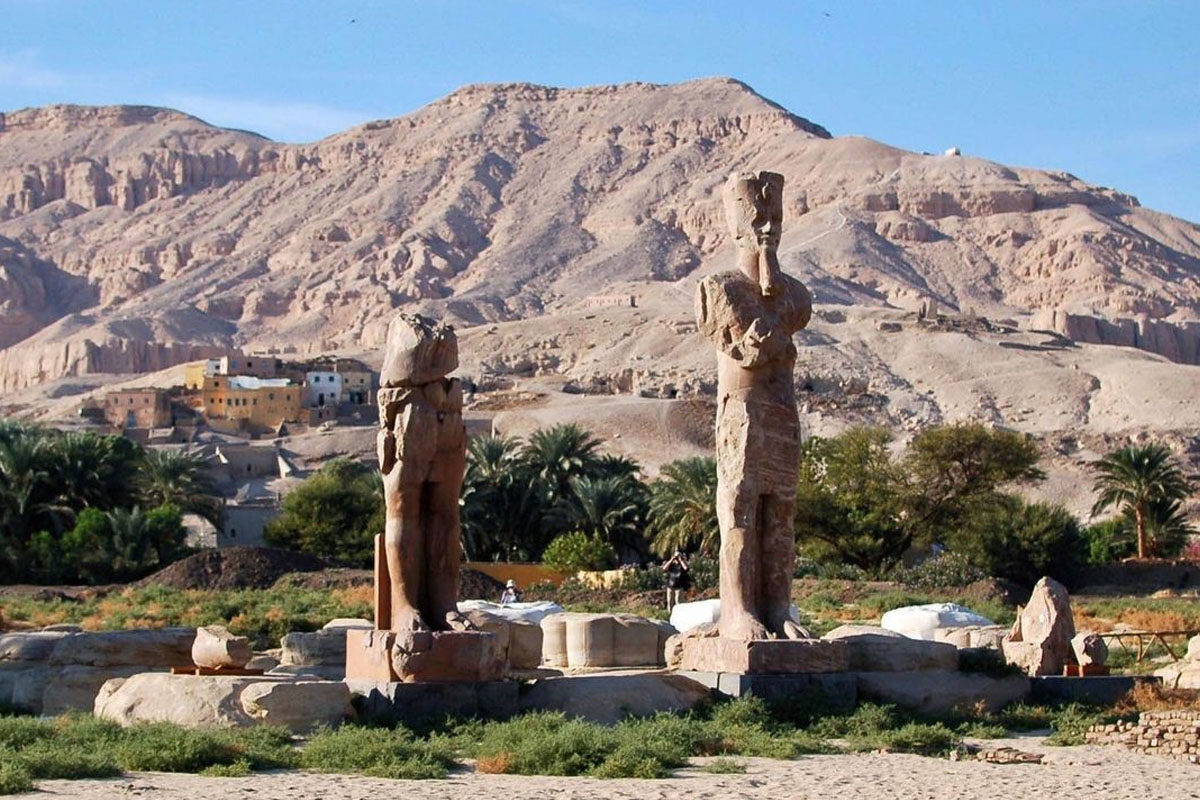
Insider’s tip: Visitors are limited to the area surrounding the Colossi. But keep an eye out as you drive past on your way to the Valley of the Kings. You’ll likely spot archaeologists uncovering new treasures!
Hundreds of statues have been unearthed here including fascinating animal figures like jackals and sphinx-crocodiles – all used in ancient rituals.
6. Hot air balloon
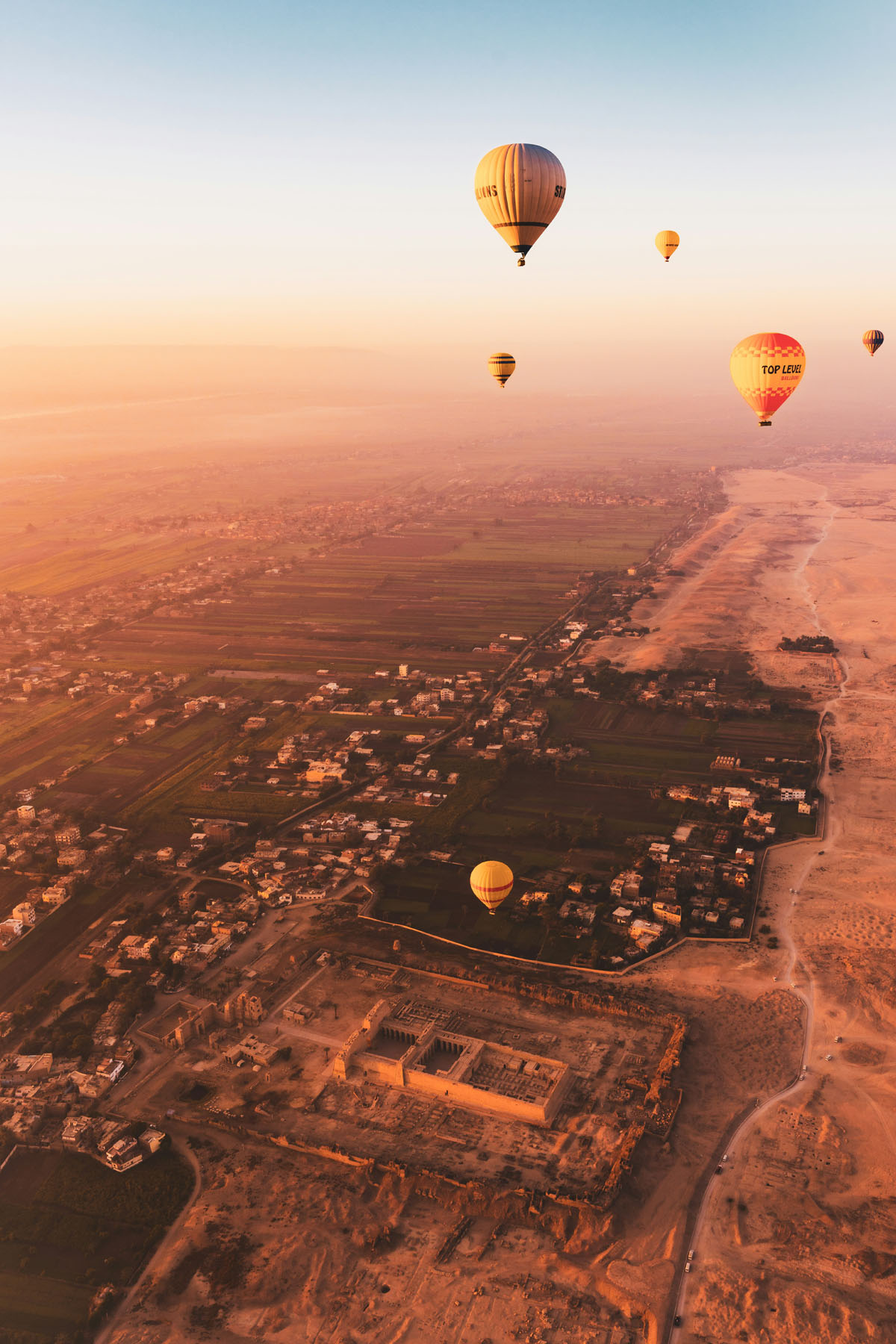
Forget your snooze button for a day because a hot air balloon ride over the Valley of the Kings is so worth the early wake-up call.
Imagine this: you’re floating above some of the world’s most legendary temples with epic views of the Theban hills below. And sunrise over the valley is magical as the yellows and pinks softly illuminate the fields – it’s an incredible photo op.
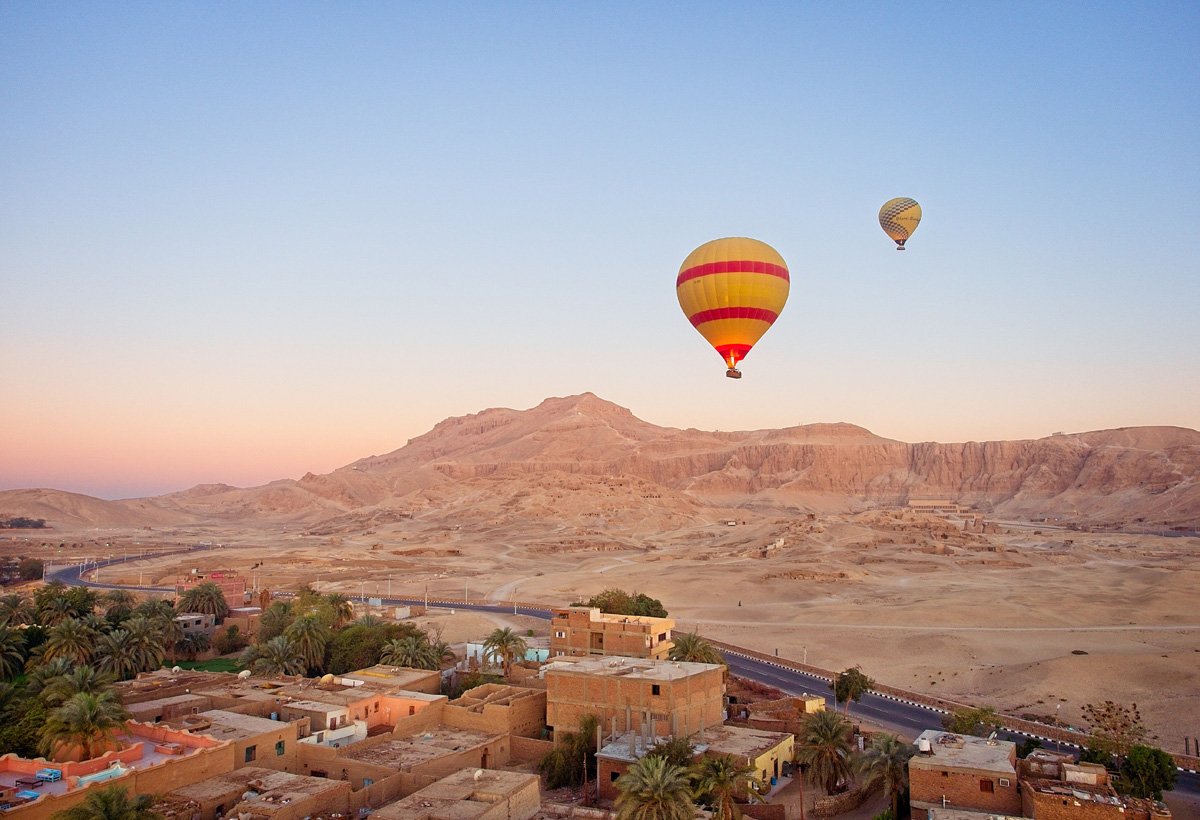
The best part? You’ll glide silently over the valley to spot tombs, farm fields and ancient monuments like an explorer of old. It’s an adventure you’ll never forget.
The tours usually start with your hotel pick-up before sunrise. The hot air balloon ride last about 45 minutes just as the sun rises over the city. You’ll be back at your hotel or Nile cruise in time for breakfast.
7. Valley of the Queens
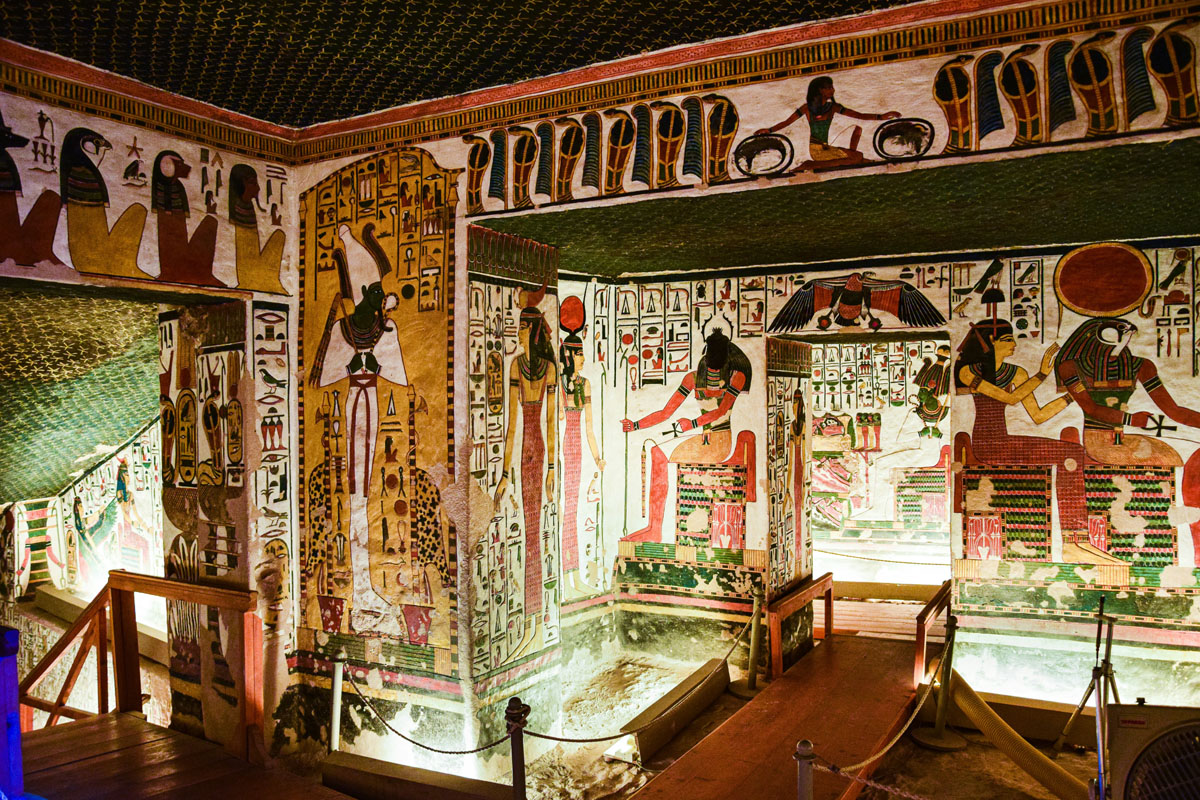
These magnificent tombs of Ancient Egypt’s powerful queens are sometimes even more colorful and elaborate than their counterparts at the Valley of the Kings.
And they’re absolutely worth visiting – some people even say the Valley of the Queens (and princesses) is even more impressive than the kings (plus far less crowded).
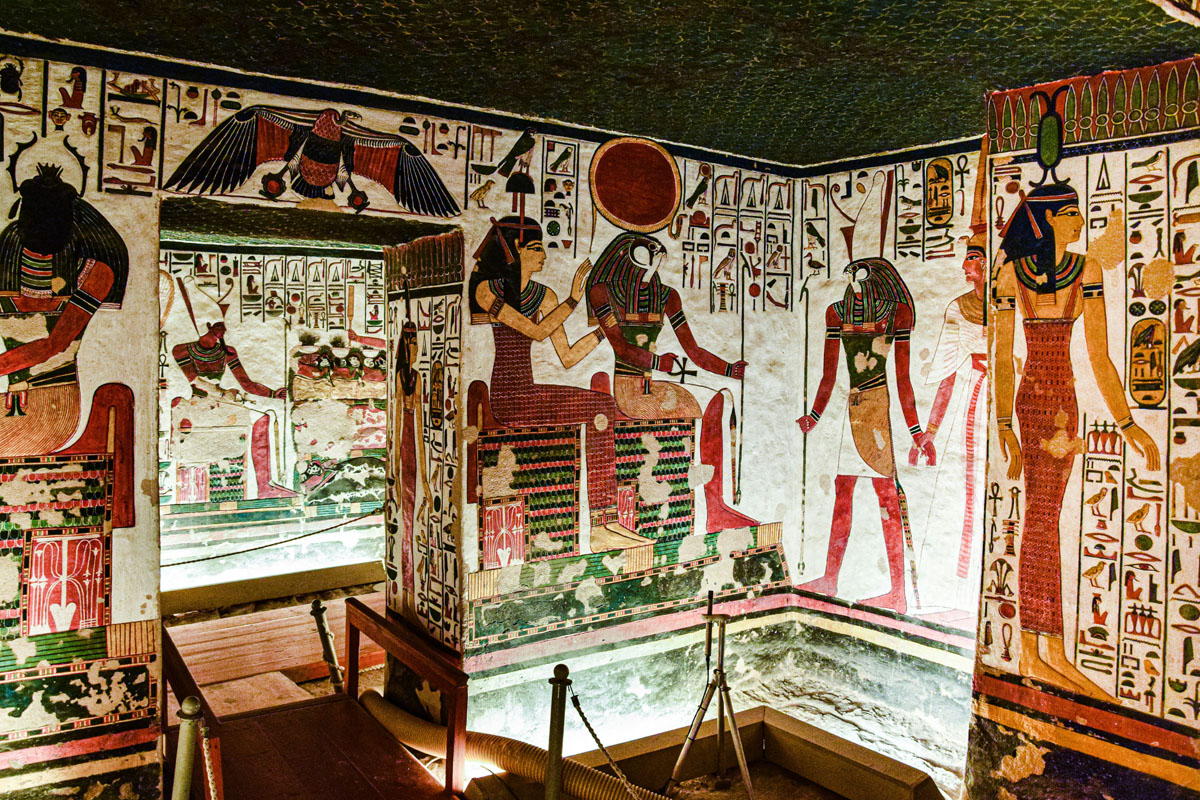
The Tomb of Queen Nefertari (above) is the star attraction and it’s absolutely worth the additional hefty ticket price. The colors and vibrancy inside this tomb are truly spectacular and the artistry is simply masterful. Visitors are allowed inside for about 15 minutes, but a tip goes a long way.
Nefertari’s tomb is often considered the masterpiece of all the Ancient Egyptian tombs, though many other tombs in the Valley of the Queens are smaller than the kings. A standard ticket gives you entry to three different tombs of your choice (just like at the Valley of the Kings).
8. Valley of the Artisans (Deir el Medina)
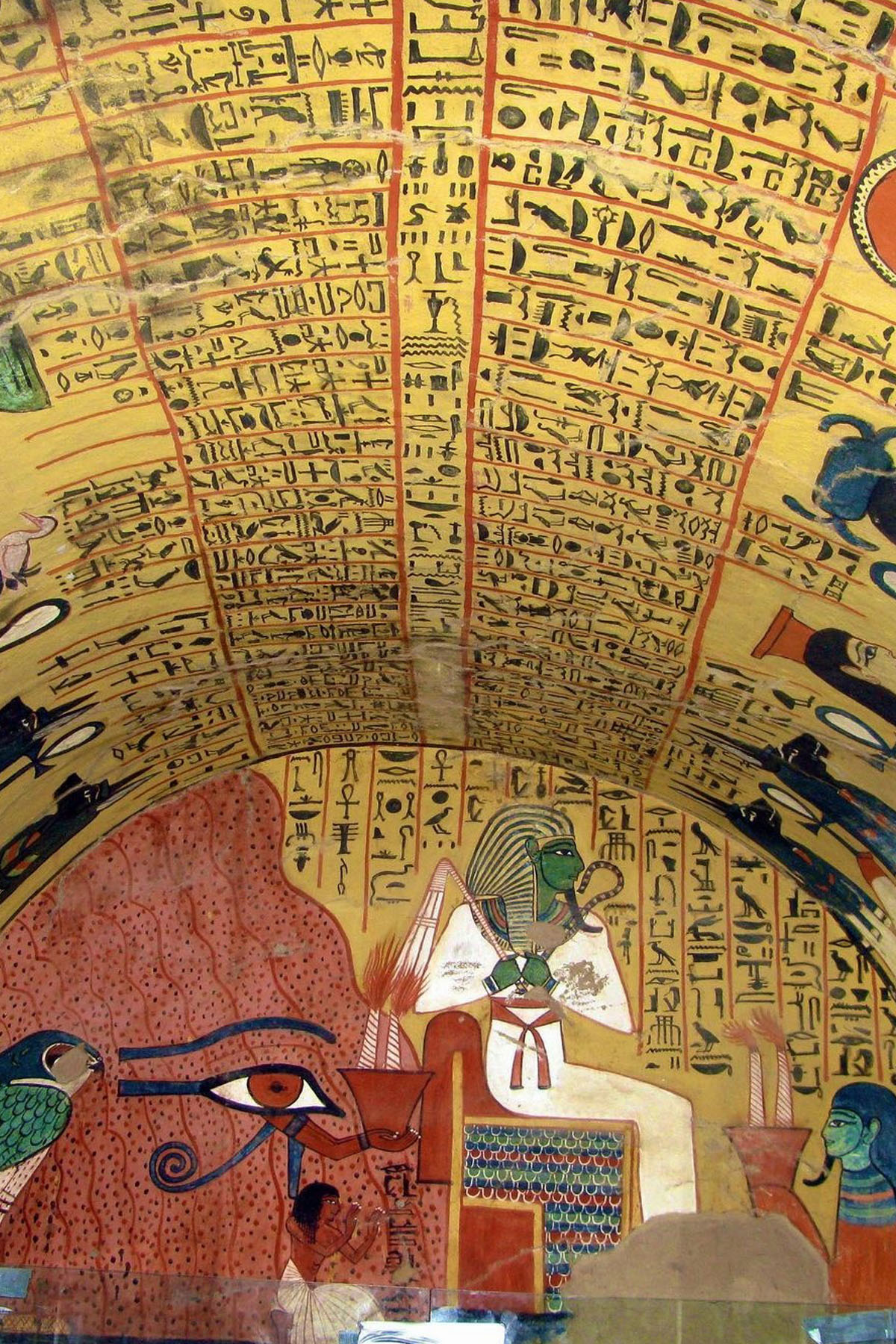
This lesser-visited gem was home to the people behind all those spectacular tombs: the artisans and skilled craftsmen who actually built the final resting places of the pharaohs.
Deir el Medina is a well preserved village that housed these ancient artisans. It includes homes, bakeries, workshops and small temples that offer a fascinating glimpse into the everyday lives of these workers.
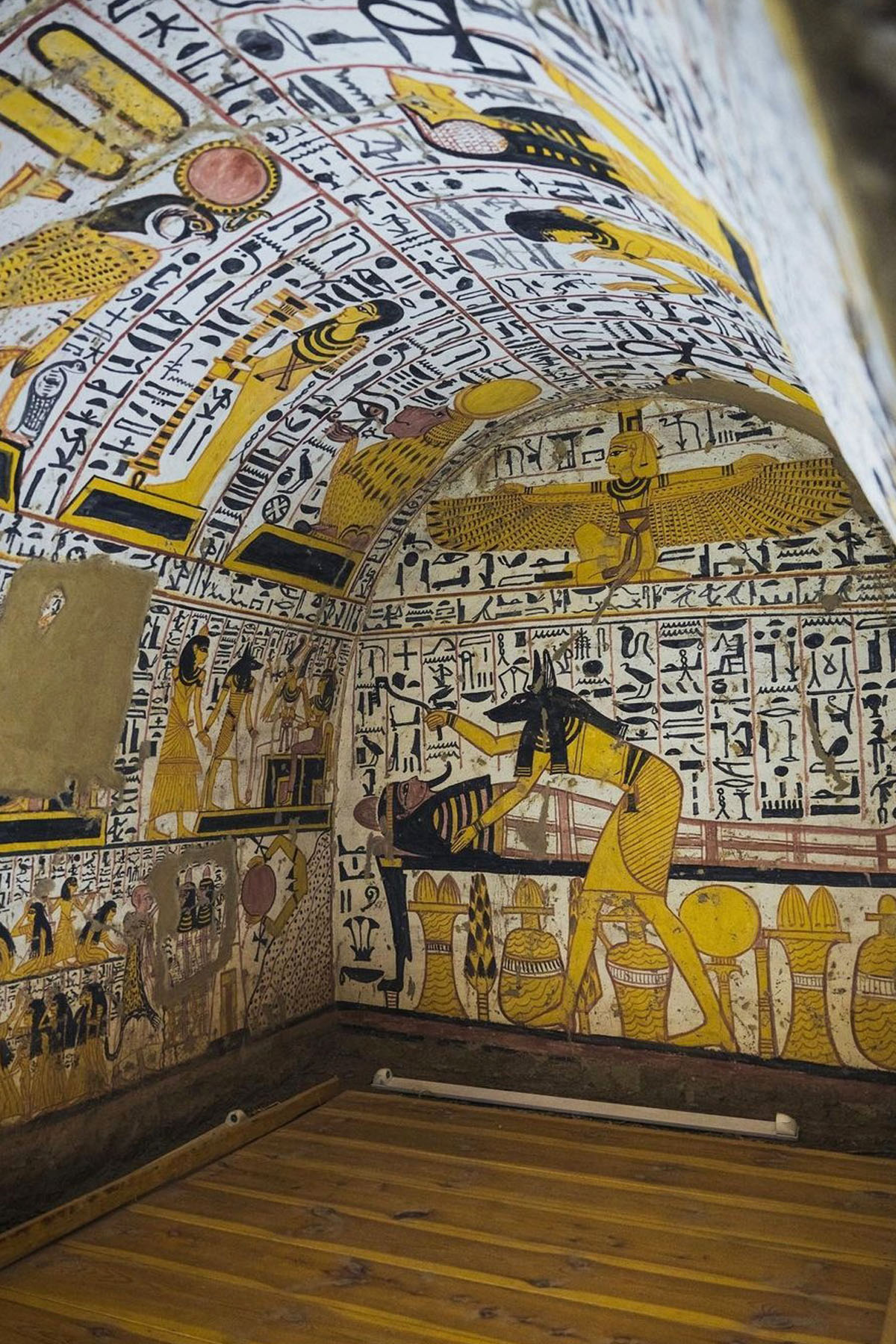
Deir el Medina also has some beautiful tombs that – unlike the pharaoh’s – depict everyday life, family and celebrations. Tombs like Sennedjem and Pashedu are very well-preserved and just as colorful as the kings and queens.
Deir el Medina has given Egyptologists some of the best accounts of community life in the ancient world – and the social interactions and living conditions that made up this artistic village.
It’s also far less crowded than the Valley of the Kings – and a refreshing look at life in everyday Ancient Egypt.
9. Luxor Museum
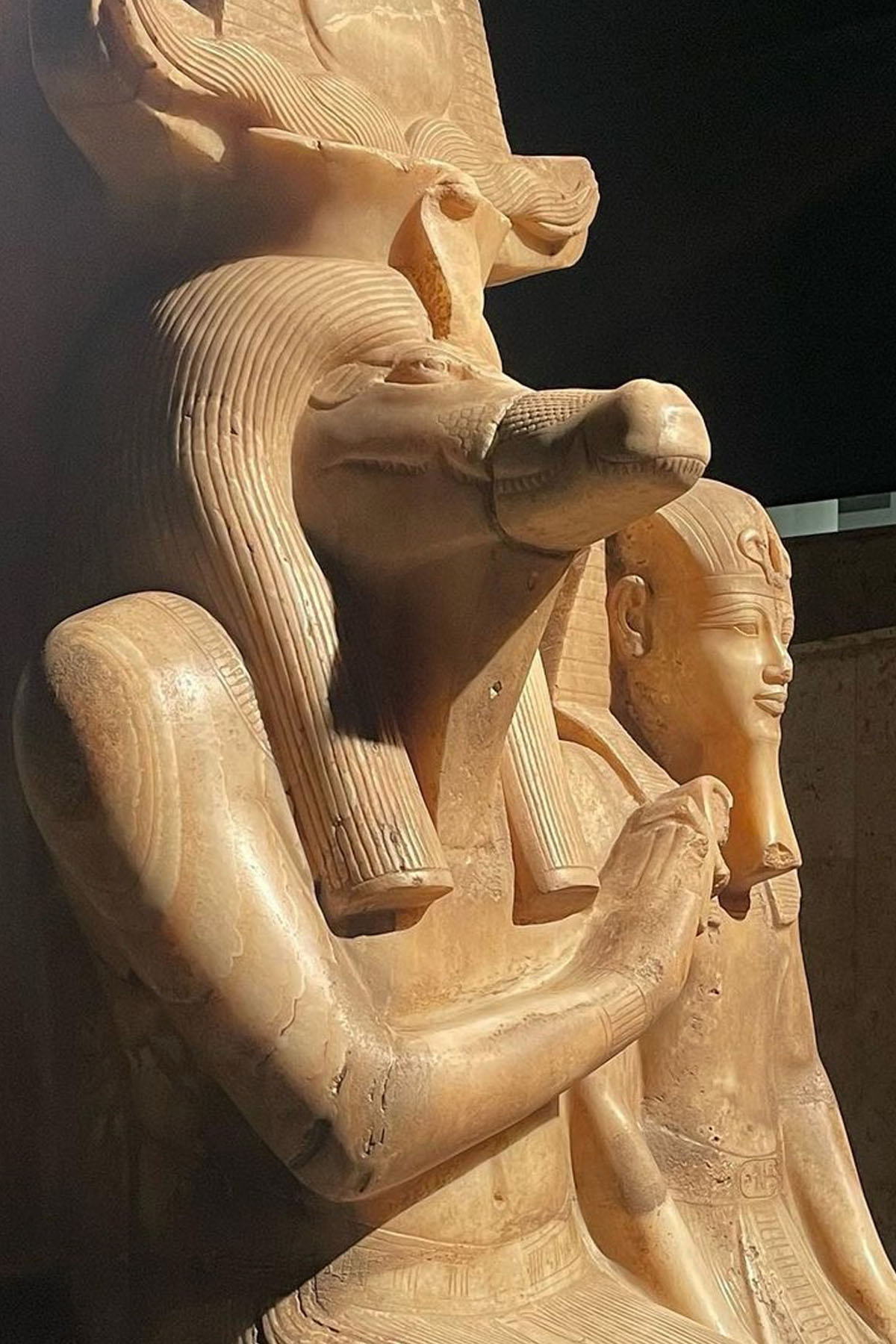
The Luxor Museum has a beautiful (but manageable) collection of Ancient Egyptian treasures that will deepen your explorations of Luxor’s grand monuments.
It’s a well-labelled and spacious museum lined with statues, two royal mummies, jewelry, pottery and everyday objects from the Predynastic Period to the Islamic era. And it’s a fascinating insight into the history of Luxor itself.
Many exhibits have informative and readable labels that help you grasp the history of this ancient city. There’s also a great papyrus collection and a reconstruction of Akhenaten’s wall at Karnak.
Insider’s tip: The Luxor Museum is open until 10 pm so it’s a great to visit at night after a day spent sightseeing in the sun. It’s also air conditioned and offers a nice escape on balmy afternoons.
10. Felucca on the Nile

Book a sunset sail along the Nile in a traditional wooden felucca boat to experience the lifeline of this ancient city.
A felucca sail is a cool and refreshing break from the city. And a great moment to watch the sun set behind the hills of the West Bank. Soak in the views and visit Banana Island (an island lined with plantations) to walk the fields and munch on some fresh fruits.

It’s a great way to spot water buffalo, camels, children playing in the river and other scenes of everyday life that are unchanged for generations.
11. Ramesseum
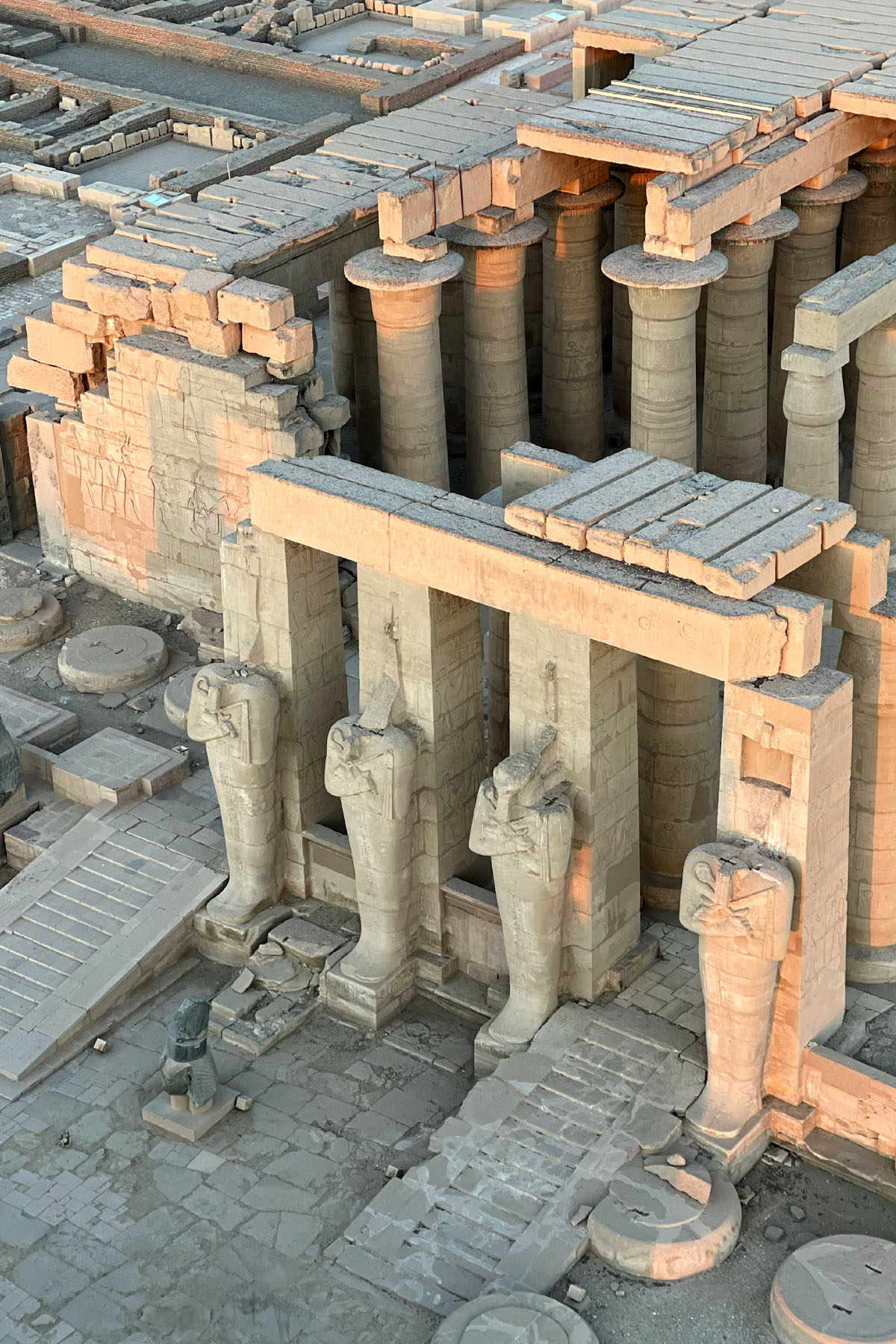
A prolific builder across Ancient Egypt (see Abu Simbel and Karnak), Ramses II built the Ramesseum as a mortuary temple to his own glory.
The Ramesseum boasts reliefs that chronicle the pharaoh’s most triumphant moments, from his (definitely embellished) victory over the Hittites at Kadesh to a raid on what was likely Jerusalem.
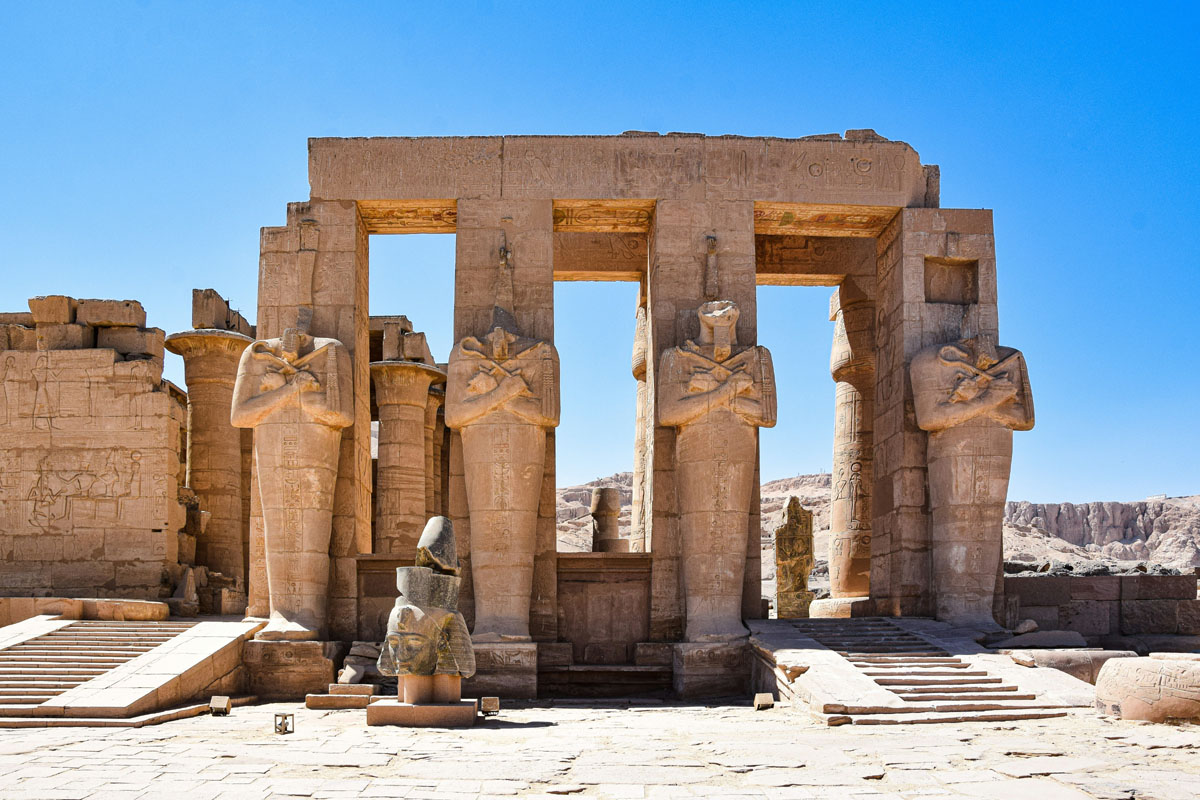
Insider’s tip: The Ramesseum is a welcome respite from the tourist crowds and off the beaten path. If you’re a lover of Ancient Egypt, or just seeking some quiet exploration, it’s definitely worth a visit.
But the Ramesseum is also a poignant reminder of the impermanence of empires. The temple once held a colossal statue of Ramses called the Ozymandias, which now lays in ruins. And this fallen giant was the inspiration for Percy Bysshe Shelley’s famously despairing poem Ozymandias.
12. Temple of Ramses III at Medinet Habu
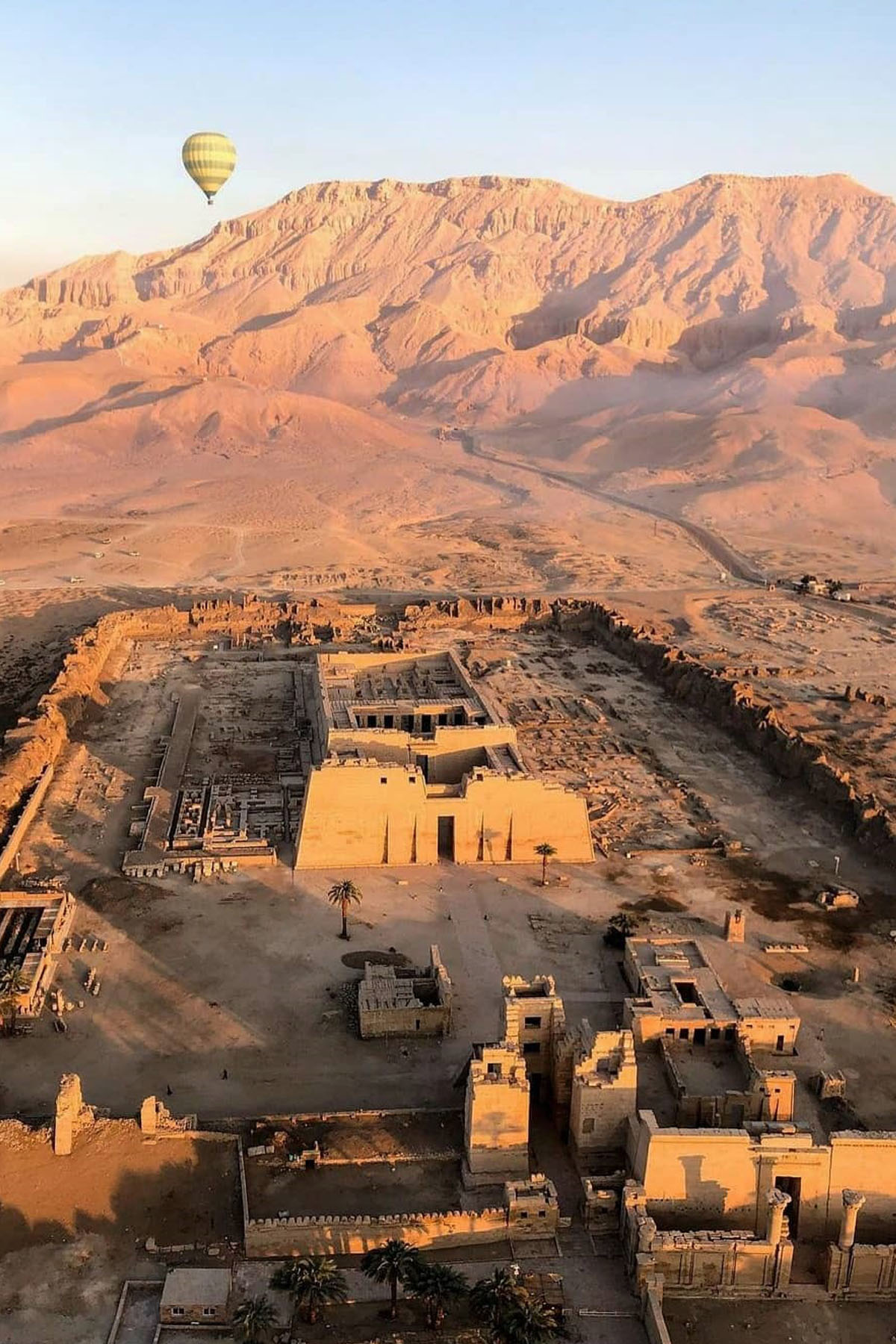
This mortuary temple of Ramses III stands as a giant tribute to the New Kingdom pharaoh’s greatest victories.
Unlike tourist hotspots like Karnak or Hatshepsut, the Temple of Ramses III boasts a quieter atmosphere with far fewer crowds. Yet its well-preserved with colorful reliefs and majestic columns – along with some fascinating history.
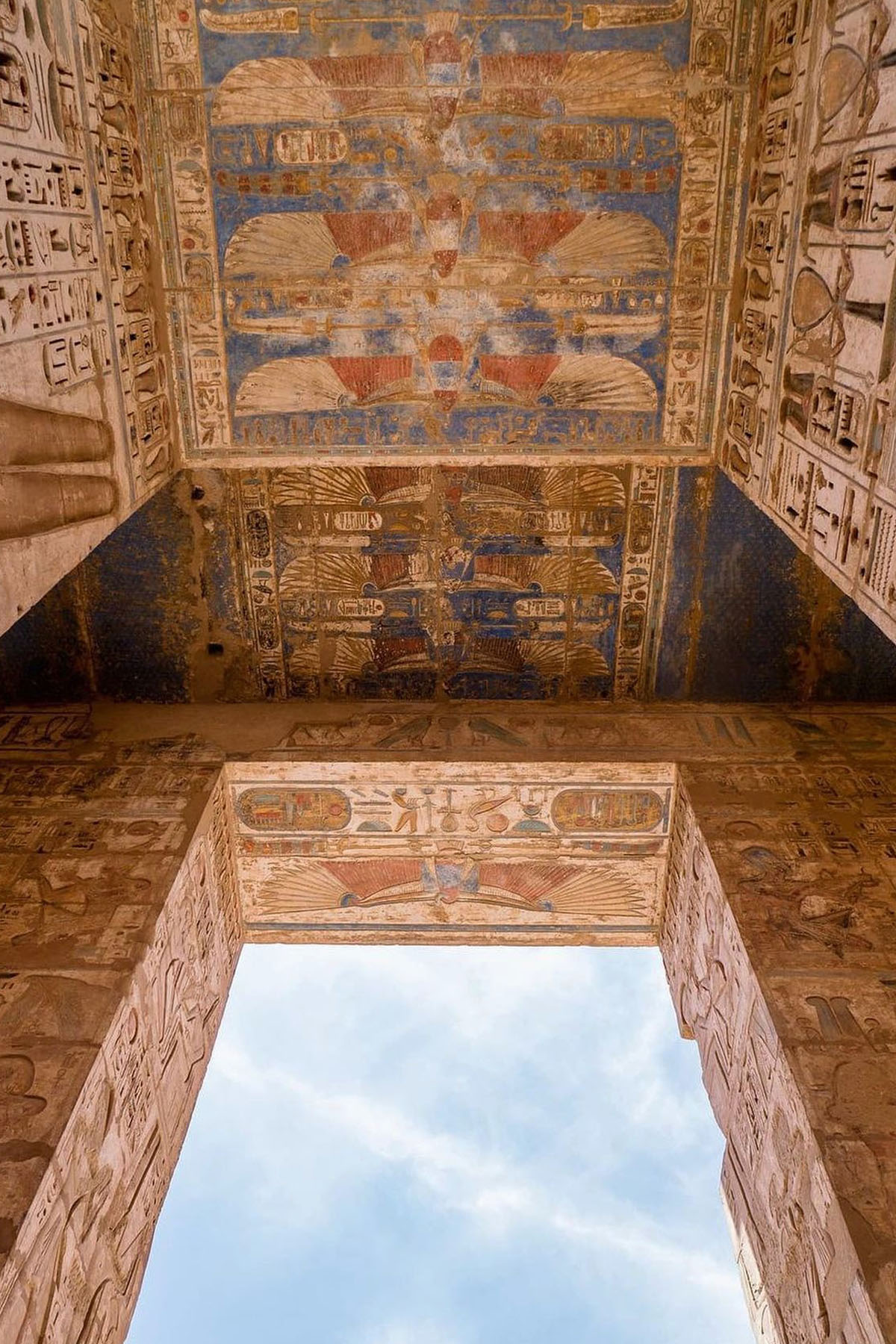
The temple is best known for some fascinating reliefs that depict the epic Battle of the Delta. Ramses III is shown defeating mysterious invaders known as the “Sea Peoples.” Historians speculate these warriors may have originated from modern-day Turkey or Greece.


